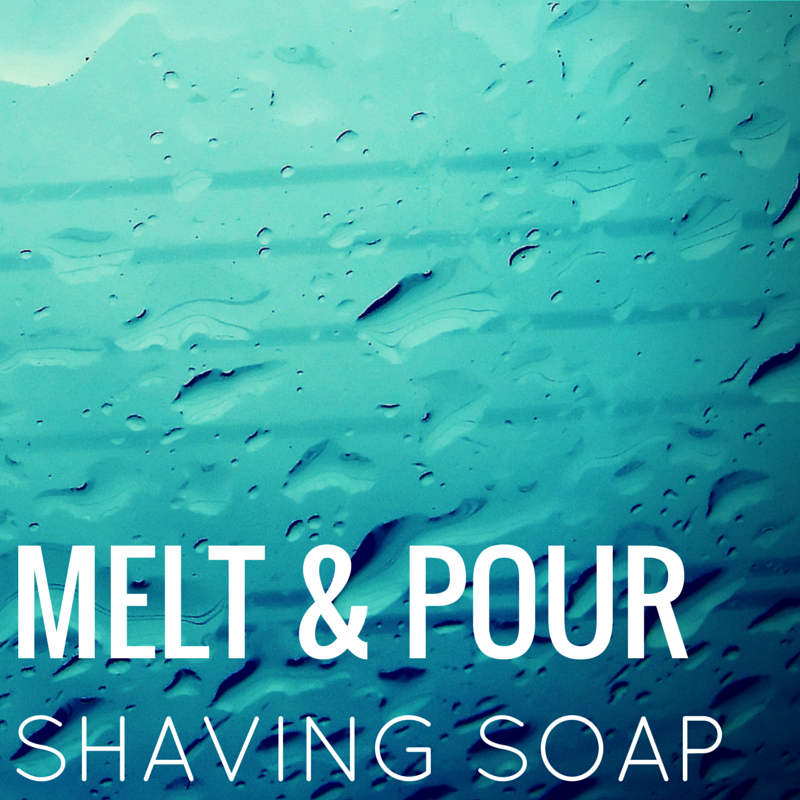You want to start experimenting with shaving soap, but you’re feeling a little overwhelmed. Locating, buying, and handling lye and a myriad of oils can be confusing.
If you just want to experiment with different fragrances and/or superfats, melt and pour soap can be a great way to go. In this post, I’m going to sum up the pros and cons of melt and pour shaving soap.
Melt and pour soap is a packaged soap base. You buy melt and pour soap in a large block, then slice off what you’d like to use for your own customized batch.
You melt the slice down and add the fragrances, colorants, or superfats that you want to try, then pour it into your mold.
It’s that easy.
Plus, since there’s no lye left, there’s no cure time. You also don’t have to worry about your fragrances speeding up trace.
However, melt and pour isn’t without drawbacks.
Firstly, you can’t adjust the fats used in melt and pour soap, with the exception of adding a superfat when you melt it down. Even that can risk throwing off your finished soap and making it too oily.
Plus, you can’t change the alkalis used in your soap, either. If it was made using a lot of NaOH, it’s going to be quite hard.
A related drawback to melt and pour shaving soap is that you can’t really experiment with different varieties of shaving soap such as softer Italian-style soaps – unless you have that specific type of base.
Another problem specific to melt and pour shaving soap is that most melt and pour bases are formulated for standard bath soap. However, regular soap and shaving soap require a very different set of properties (and therefore ingredients). The large majority of melt and pour bases won’t make good shaving soap.
(One possible exception is Brambleberry’s Shaving Melt and Pour Base. This base is mostly coconut and palm oils, which are both fairly common in shaving soap, plus some added glycerin for slip. I don’t have any personal experience with this soap, but it is rumoured that a handful of well-liked shaving soap producers use it.)
Finally, maybe this is just me – but I actually enjoy learning all the little details of a new hobby. Learning the ins and outs, doing it from scratch, and making mistakes makes the end result much more rewarding.
Let’s break down the pros and cons of melt and pour shaving soap:
Pros
- Easy to make
- Minimal research
- No cure time
- No speeding up trace with fragrances
- No dealing with lye when making your soap, and no chance of leftover lye
- You can quickly experiment with fragrances, colors, and superfats
Cons
- Can’t use different base oils
- Most melt and pour bases make poor shaving soaps unless they’re specifically formulated for the job
- Can’t create different varieties of shaving soap
- Can’t adjust NaOH and KOH ratio
- Possibly less rewarding
In summary, you have to decide what your personal goals are when creating shaving soap. If you want to create the perfect base and shaving experience, you should formulate your own shaving soap. If you just want to vary fragrance and color, melt and pour shaving soap would be a great fit.
There isn’t really one clear winner. It depends on what you want to get done.
——————————
Thanks for reading, shavers & soapers! Thanks as well for visiting the new site. If you have any comments about this article or the new home of Shaver Soaper, please let me know in the comments below!
Until next time,
Lewis

